Grow Strawberries at Home and unlock a world of sweet, juicy goodness right in your backyard! Imagine plucking sun-ripened strawberries, bursting with flavor, just steps from your kitchen. Forget those bland, store-bought berries – with a few simple tricks and a little DIY magic, you can cultivate your own thriving strawberry patch, no matter how small your space.
Strawberries have a rich history, enjoyed for centuries across cultures. From ancient Roman gardens to medieval feasts, these vibrant berries have always been prized for their delicious taste and health benefits. Today, the joy of growing your own food is experiencing a resurgence, and what better way to participate than by learning how to grow strawberries at home?
Let’s face it, buying fresh, high-quality strawberries can be expensive, and sometimes, disappointing. This DIY guide is your secret weapon to bypass the grocery store and enjoy an abundance of homegrown strawberries. I’m going to share easy-to-follow techniques, clever hacks, and insider tips that will transform even the most novice gardener into a strawberry-growing pro. Get ready to ditch the store-bought berries and indulge in the unparalleled taste of your own homegrown harvest!
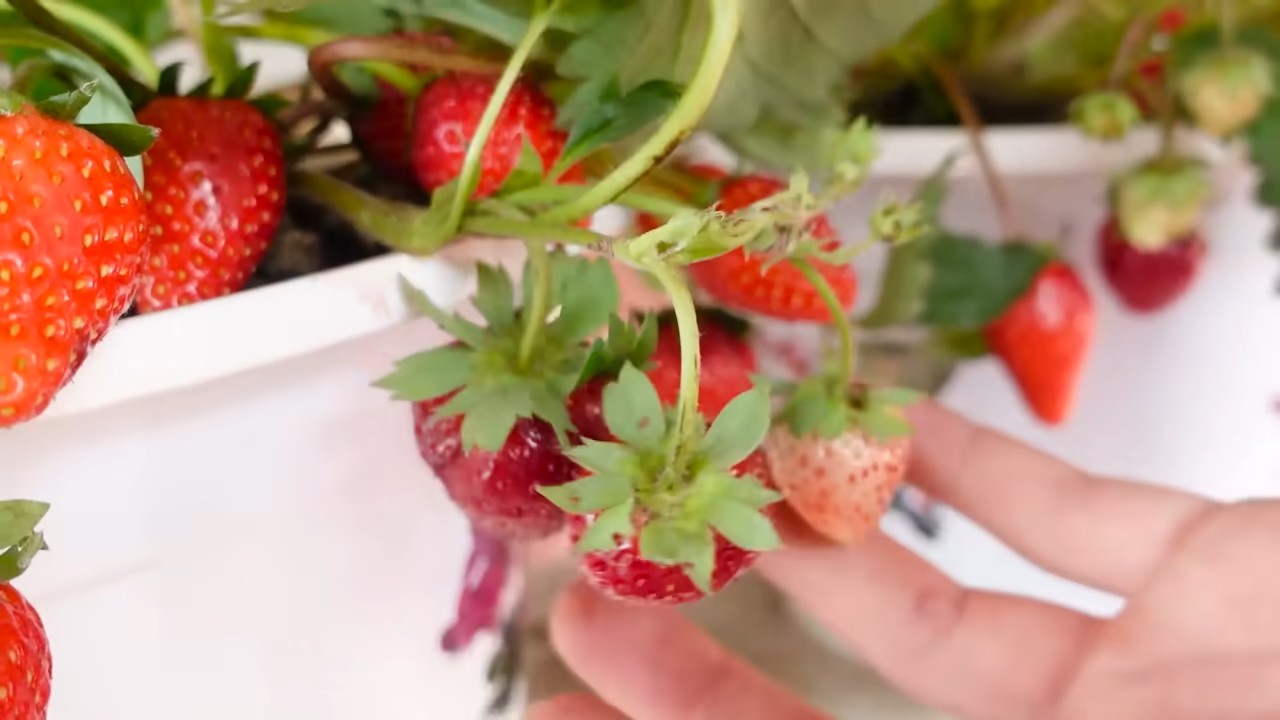
Erdbeeren zu Hause anbauen: Dein DIY-Guide für eine reiche Ernte
Hallo liebe Gartenfreunde! Habt ihr euch jemals vorgestellt, frische, saftige Erdbeeren direkt von eurem Balkon oder Garten zu pflücken? Ich zeige euch, wie ihr diesen Traum mit ein paar einfachen DIY-Tricks verwirklichen könnt. Egal, ob ihr einen großen Garten oder nur einen kleinen Balkon habt, Erdbeeren anzubauen ist einfacher als ihr denkt und macht unglaublich viel Spaß!
Was du für deinen Erdbeer-Garten brauchst
Bevor wir loslegen, hier eine Liste der Dinge, die du benötigst:
* Erdbeerpflanzen: Wähle robuste Sorten, die für dein Klima geeignet sind. Frag am besten in deiner lokalen Gärtnerei nach.
* Pflanzgefäße: Töpfe, Balkonkästen, Hängekörbe oder sogar alte Eimer – alles ist möglich! Achte nur darauf, dass sie ausreichend groß sind (mindestens 15 cm Durchmesser pro Pflanze) und Drainagelöcher haben.
* Erdbeerspezifische Pflanzerde: Diese Erde ist speziell auf die Bedürfnisse von Erdbeeren abgestimmt und sorgt für eine optimale Nährstoffversorgung.
* Organischer Dünger: Für eine reiche Ernte ist eine regelmäßige Düngung wichtig.
* Gießkanne oder Gartenschlauch: Zum Bewässern deiner Erdbeerpflanzen.
* Mulchmaterial: Stroh, Holzhackschnitzel oder spezielle Erdbeermulchfolie helfen, die Feuchtigkeit im Boden zu halten und Unkraut zu unterdrücken.
* Gartenschere: Zum Entfernen von Ausläufern und abgestorbenen Blättern.
* Handschuhe: Um deine Hände sauber zu halten.
* (Optional) Vogelschutznetz: Wenn du viele hungrige Vögel in deiner Gegend hast, kann ein Netz deine Ernte retten.
Die richtige Vorbereitung ist das A und O
Bevor wir mit dem Pflanzen beginnen, ist es wichtig, alles gut vorzubereiten. Das spart später Zeit und Mühe und sorgt für einen guten Start für deine Erdbeerpflanzen.
1. Wähle den richtigen Standort: Erdbeeren lieben die Sonne! Suche einen sonnigen Platz, der mindestens 6 Stunden direktes Sonnenlicht pro Tag bekommt. Ein halbschattiger Standort ist auch möglich, aber die Ernte wird dann etwas geringer ausfallen.
2. Bereite die Pflanzgefäße vor: Reinige die Töpfe oder Kästen gründlich. Wenn du alte Töpfe verwendest, achte darauf, dass sie keine Krankheiten übertragen. Fülle die Gefäße mit der Erdbeerspezifischen Pflanzerde. Lass oben etwa 2-3 cm Platz zum Gießen.
3. Lockere die Erde auf: Bevor du die Erdbeerpflanzen einsetzt, lockere die Erde in den Gefäßen mit einer kleinen Schaufel oder deinen Händen auf. Das erleichtert den Wurzeln das Anwachsen.
4. Wässere die Erde: Gieße die Erde in den Pflanzgefäßen gründlich, bevor du die Erdbeerpflanzen einsetzt. So ist die Erde bereits feucht und die Pflanzen haben einen guten Start.
Erdbeeren pflanzen: Schritt für Schritt
Jetzt kommt der spannende Teil: das Pflanzen der Erdbeeren! Keine Sorge, es ist wirklich einfach.
1. Hole die Erdbeerpflanzen aus ihren Töpfen: Drücke vorsichtig von unten gegen den Topf, um die Pflanze herauszulösen. Wenn die Wurzeln sehr dicht sind, kannst du sie vorsichtig etwas auflockern.
2. Setze die Erdbeerpflanzen ein: Mache in der vorbereiteten Erde ein Loch, das groß genug für den Wurzelballen ist. Setze die Pflanze so ein, dass der Wurzelhals (der Übergang zwischen Wurzeln und Blättern) knapp über der Erdoberfläche liegt.
3. Fülle das Loch mit Erde auf: Fülle das Loch mit Erde auf und drücke sie leicht an. Achte darauf, dass die Pflanze stabil steht.
4. Gieße die Erdbeerpflanzen: Gieße die frisch gepflanzten Erdbeeren gründlich. Das hilft den Wurzeln, sich schnell in der neuen Erde zu etablieren.
5. Bringe Mulchmaterial auf: Verteile eine Schicht Mulchmaterial (Stroh, Holzhackschnitzel oder Erdbeermulchfolie) um die Erdbeerpflanzen. Das hält die Feuchtigkeit im Boden, unterdrückt Unkraut und schützt die Früchte vor Schmutz.
Erdbeeren im Hängekorb anbauen: Ein besonderer Hingucker
Erdbeeren im Hängekorb sind nicht nur platzsparend, sondern auch ein echter Hingucker auf dem Balkon oder der Terrasse.
1. Wähle einen geeigneten Hängekorb: Der Korb sollte ausreichend groß sein (mindestens 30 cm Durchmesser) und über eine stabile Aufhängung verfügen.
2. Verwende eine spezielle Hängekorb-Erde: Diese Erde ist leichter als normale Pflanzerde und speichert gut Wasser.
3. Pflanze die Erdbeeren dicht an dicht: In einem Hängekorb kannst du mehrere Erdbeerpflanzen dicht an dicht pflanzen. Das sorgt für eine üppige Optik.
4. Achte auf eine gute Drainage: Stelle sicher, dass der Hängekorb eine gute Drainage hat, damit das Wasser gut ablaufen kann.
5. Gieße regelmäßig: Hängekörbe trocknen schneller aus als Töpfe auf dem Boden. Gieße deine Erdbeeren im Hängekorb daher regelmäßig, besonders an heißen Tagen.
Pflege deiner Erdbeerpflanzen: So bleibt deine Ernte reichlich
Die richtige Pflege ist entscheidend für eine reiche Erdbeerernte. Hier sind ein paar Tipps, die du beachten solltest:
* Regelmäßiges Gießen: Erdbeeren brauchen regelmäßig Wasser, besonders während der Blütezeit und der Fruchtbildung. Achte darauf, dass die Erde immer leicht feucht ist, aber nicht nass. Vermeide Staunässe, da dies zu Wurzelfäule führen kann.
* Düngen: Dünge deine Erdbeerpflanzen regelmäßig mit einem organischen Dünger. Beginne mit dem Düngen, sobald die ersten Blüten erscheinen, und wiederhole die Düngung alle 2-3 Wochen.
* Ausläufer entfernen: Erdbeeren bilden Ausläufer, an denen sich neue Pflanzen bilden. Wenn du eine reiche Ernte möchtest, solltest du die Ausläufer regelmäßig entfernen. Schneide sie einfach mit einer Gartenschere ab. Wenn du neue Pflanzen ziehen möchtest, kannst du einige Ausläufer bewurzeln lassen.
* Abgestorbene Blätter entfernen: Entferne regelmäßig abgestorbene Blätter, um Krankheiten vorzubeugen.
* Schutz vor Schädlingen und Krankheiten: Erdbeeren können von verschiedenen Schädlingen und Krankheiten befallen werden. Kontrolliere deine Pflanzen regelmäßig und ergreife bei Bedarf Maßnahmen. Gegen Blattläuse hilft beispielsweise eine Seifenlauge. Gegen Pilzkrankheiten kannst du ein Fungizid einsetzen.
* Vogelschutz: Vögel lieben Erdbeeren! Wenn du viele Vögel in deiner Gegend hast, solltest du deine Erdbeeren mit einem Vogelschutznetz schützen.
Erdbeeren ernten: Der Lohn deiner Mühe
Endlich ist es soweit: Die Erdbeeren sind reif und können geerntet werden!
1. Erntezeitpunkt: Erdbeeren sind reif, wenn sie tiefrot gefärbt sind und leicht vom Stiel abzulösen sind.
2. Erntetechnik: Pflücke die Erdbeeren vorsichtig mit dem Stiel ab. Vermeide es, die Früchte zu quetschen.
3. Regelmäßiges Ernten: Ernte die Erdbeeren regelmäßig, sobald sie reif sind. Das fördert die Bildung neuer Früchte.
4. Genießen: Genieße deine frisch geernteten Erdbeeren pur, im Müsli, im Kuchen oder als Marmelade!
DIY-Tipps für noch mehr Erdbeerglück
* Erdbeerturm selber bauen: Aus alten Plastikrohren oder Paletten kannst du einen Erdbeerturm bauen. Das spart Platz und sieht toll aus.
* Erdbeeren in alten Schuhen pflanzen: Alte Schuhe sind ein origineller Pflanzbehälter für Erdbeeren.
* Erdbeeren mit Kräutern kombinieren: Pflanze Erdbeeren
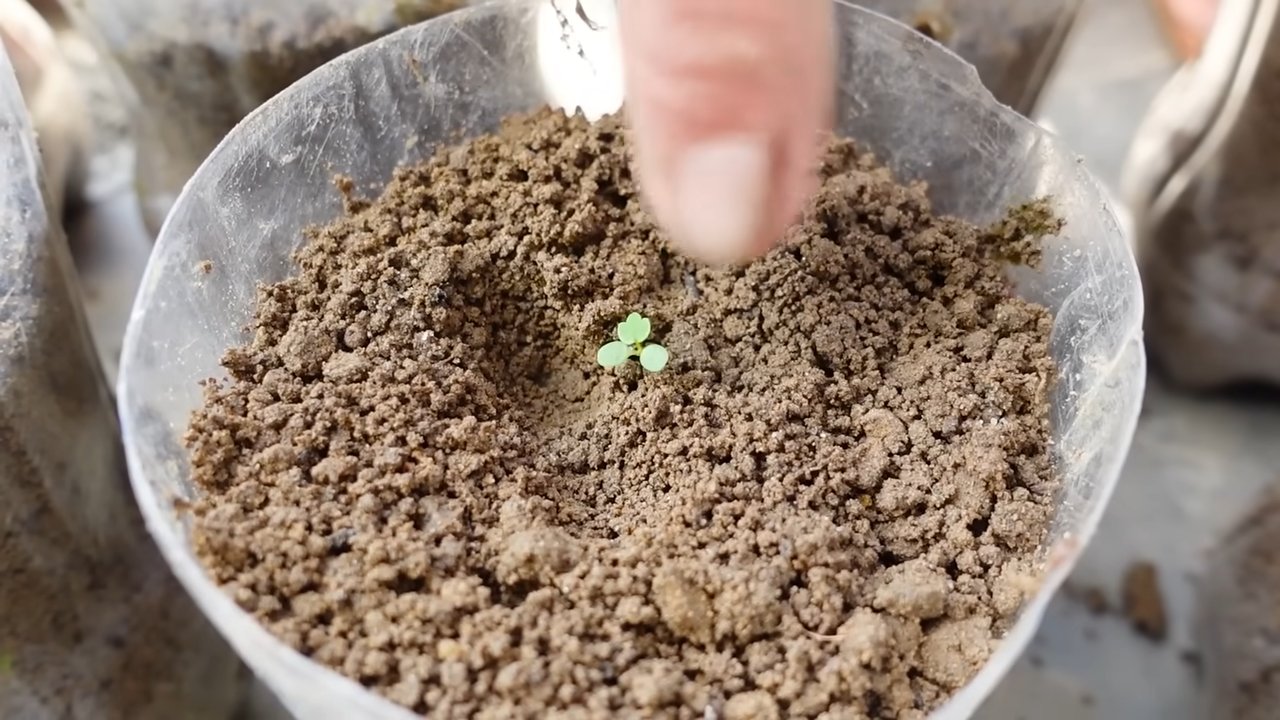
Conclusion
So, there you have it! Growing strawberries at home is not only achievable, but it’s also incredibly rewarding. Forget those bland, store-bought berries that lack the vibrant flavor of sunshine and freshness. With a little effort and the right approach, you can cultivate your own personal patch of sweet, juicy goodness right in your backyard, balcony, or even on a sunny windowsill.
This DIY trick, focusing on [mention specific trick from article, e.g., vertical strawberry planters, using coffee grounds as fertilizer, etc.], is a game-changer for several reasons. First, it maximizes space, allowing even apartment dwellers to indulge in homegrown strawberries. Second, it often leads to healthier, more robust plants, as you have complete control over their environment and nutrition. Third, and perhaps most importantly, it connects you to the food you eat, fostering a deeper appreciation for the natural world and the simple pleasures of life.
But don’t stop there! Experiment with different strawberry varieties to discover your favorites. Try adding companion plants like basil or marigolds to deter pests and enhance growth. Consider using different types of containers or growing mediums to see what works best in your specific climate and conditions. The possibilities are endless!
We wholeheartedly encourage you to give this DIY strawberry growing method a try. It’s a fantastic project for families, a therapeutic activity for individuals, and a delicious way to enjoy the fruits (literally!) of your labor. Once you’ve tasted your own homegrown strawberries, you’ll never look at store-bought berries the same way again.
Don’t be afraid to get your hands dirty, embrace the learning process, and most importantly, have fun! And when you’ve harvested your first batch of sweet, juicy strawberries, be sure to share your experience with us. We’d love to hear your tips, tricks, and triumphs in the comments below. Let’s build a community of strawberry enthusiasts and spread the joy of homegrown goodness! Let us know what kind of **strawberry growing** method you used and how it worked out for you!
Frequently Asked Questions (FAQs)
Q: What are the best strawberry varieties to grow at home?
A: The best strawberry variety for you will depend on your climate and personal preferences. However, some popular and reliable choices include:
* **Everbearing varieties:** These produce fruit throughout the growing season, offering a continuous harvest. Popular everbearing varieties include “Albion,” “Seascape,” and “Ozark Beauty.”
* **June-bearing varieties:** These produce a large crop of strawberries in a concentrated period, typically in June. They are known for their intense flavor and are ideal for making jams and preserves. Popular June-bearing varieties include “Chandler,” “Honeoye,” and “Earliglow.”
* **Day-neutral varieties:** These are less sensitive to day length and can produce fruit throughout the growing season, similar to everbearing varieties. They are a good option for areas with mild climates. Popular day-neutral varieties include “Tristar” and “Tribute.”
* **Alpine Strawberries:** These are small, intensely flavored strawberries that are easy to grow and require less space than other varieties. They are a great option for containers and small gardens.
Consider your local climate and growing conditions when selecting a variety. Your local nursery can provide recommendations for varieties that thrive in your area.
Q: How much sunlight do strawberries need?
A: Strawberries need at least 6-8 hours of direct sunlight per day to produce abundant, flavorful fruit. Choose a location that receives plenty of sunlight throughout the day. If you’re growing strawberries indoors, supplement with grow lights if necessary. Insufficient sunlight can lead to smaller, less flavorful berries.
Q: What kind of soil is best for growing strawberries?
A: Strawberries prefer well-drained, slightly acidic soil with a pH between 5.5 and 6.5. Amend your soil with compost or other organic matter to improve drainage and fertility. Avoid heavy clay soils, as they can retain too much moisture and lead to root rot. If you’re growing strawberries in containers, use a high-quality potting mix specifically formulated for fruits and vegetables.
Q: How often should I water my strawberry plants?
A: Water your strawberry plants regularly, especially during dry periods. Aim to keep the soil consistently moist but not waterlogged. Water deeply and less frequently, rather than shallowly and more often. Check the soil moisture regularly and adjust your watering schedule accordingly. Avoid overhead watering, as it can promote fungal diseases. Drip irrigation or soaker hoses are ideal for watering strawberries.
Q: How do I fertilize my strawberry plants?
A: Fertilize your strawberry plants regularly to promote healthy growth and abundant fruit production. Use a balanced fertilizer specifically formulated for fruits and vegetables. Apply fertilizer according to the package instructions. Avoid over-fertilizing, as it can lead to excessive foliage growth and reduced fruit production. You can also amend the soil with organic fertilizers like compost or aged manure.
Q: How do I protect my strawberries from pests and diseases?
A: Strawberries are susceptible to various pests and diseases, including slugs, snails, aphids, spider mites, and fungal diseases. Monitor your plants regularly for signs of infestation or disease. Use organic pest control methods, such as hand-picking pests, using insecticidal soap, or applying diatomaceous earth. To prevent fungal diseases, ensure good air circulation around your plants and avoid overhead watering. Consider using row covers to protect your plants from pests and birds.
Q: When is the best time to harvest strawberries?
A: Strawberries are ready to harvest when they are fully red and slightly soft to the touch. Gently twist the berry from the stem, leaving the green cap attached. Harvest strawberries in the morning, when they are cool and firm. Avoid harvesting strawberries that are overripe or damaged.
Q: Can I grow strawberries in containers?
A: Yes, strawberries grow very well in containers. Choose a container that is at least 12 inches deep and wide. Use a high-quality potting mix and ensure good drainage. Water and fertilize your container-grown strawberries regularly. Container-grown strawberries may require more frequent watering and fertilization than those grown in the ground.
Q: How do I overwinter my strawberry plants?
A: In colder climates, strawberry plants need protection during the winter months. After the first frost, mulch your plants with straw or pine needles to insulate the roots. In very cold areas, you may need to cover your plants with a row cover or bring them indoors. Remove the mulch in the spring, after the last frost.
Q: What are some common problems when growing strawberries and how can I fix them?
A: Some common problems include:
* **Lack of fruit:** This could be due to insufficient sunlight, poor pollination, or nutrient deficiencies. Ensure your plants receive enough sunlight, attract pollinators with companion plants, and fertilize regularly.
* **Small berries:** This could be due to insufficient watering, poor soil, or overcrowding. Water your plants regularly, amend the soil with compost, and thin out the plants if necessary.
* **Pests and diseases:** Monitor your plants regularly and take action to control pests and diseases as soon as they appear.
* **Birds eating the berries:** Cover your plants with netting to protect them from birds.
By addressing these common problems, you can ensure a successful strawberry harvest.

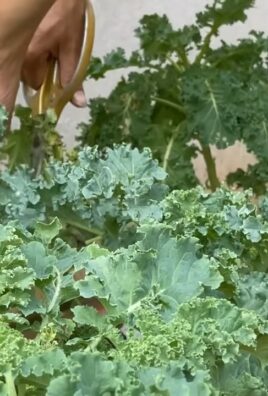
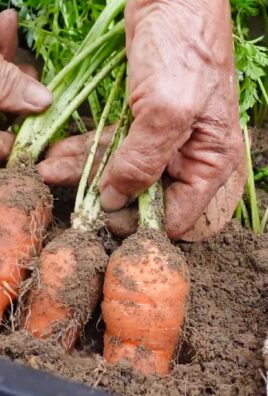
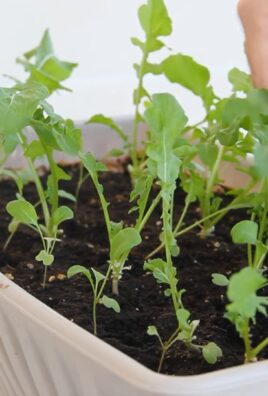
Leave a Comment